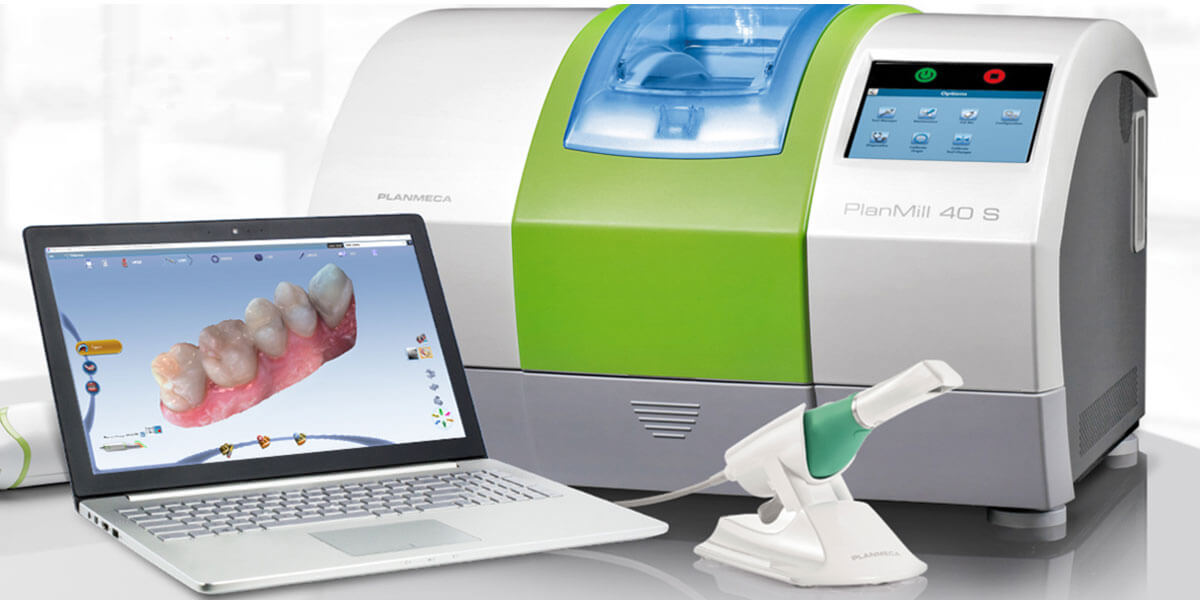Cad Cam Technology In Dentistry

The advent of computer-aided design (CAD) and computer-aided manufacturing (CAM) technology has revolutionized the field of dentistry, transforming the way dental restorations, implants, and orthodontic appliances are designed and manufactured. This technology has not only improved the accuracy and efficiency of dental procedures but has also enhanced patient outcomes and satisfaction.
At the heart of CAD/CAM technology in dentistry is the ability to digitally design and manufacture customized dental restorations, such as crowns, bridges, and dentures. This process begins with the capture of digital impressions of the patient’s mouth using an intraoral scanner. The digital impressions are then used to create a three-dimensional (3D) model of the patient’s teeth and surrounding tissues, which is displayed on a computer screen.
Using specialized software, the dentist or dental technician can then design the restoration, taking into account the patient’s unique anatomy and the desired outcome. The design is sent to a CAM machine, which uses the digital data to mill the restoration from a block of ceramic or composite material. The resulting restoration is highly accurate, with margins that fit precisely over the prepared tooth, ensuring a comfortable and natural-looking result.
One of the significant advantages of CAD/CAM technology in dentistry is the speed and efficiency it offers. Traditional methods of creating dental restorations can be time-consuming and labor-intensive, requiring multiple appointments and intermediate stages. In contrast, CAD/CAM technology enables the design and manufacture of restorations in a single visit, reducing the need for multiple appointments and temporary restorations.
Moreover, CAD/CAM technology has also improved the accuracy of dental restorations. The digital design process allows for precise control over the shape, size, and fit of the restoration, reducing the risk of human error and ensuring a more consistent outcome. Additionally, the use of digitally designed and manufactured restorations has been shown to reduce the need for adjustments and remakes, further enhancing patient satisfaction and clinical outcomes.
Another area where CAD/CAM technology has made a significant impact is in the field of dental implants. The use of digital planning and guided surgery has improved the accuracy and success rate of implant placement, allowing for more precise placement of the implant and reducing the risk of complications. The digital planning process involves the creation of a 3D model of the patient’s jawbone and surrounding tissues, which is used to plan the optimal placement of the implant.
The use of CAD/CAM technology in dentistry has also expanded to include the design and manufacture of orthodontic appliances, such as aligners and retainers. Digital impressions and 3D modeling enable the creation of customized appliances that are tailored to the individual patient’s needs, improving the efficiency and effectiveness of orthodontic treatment.
To further understand the benefits and applications of CAD/CAM technology in dentistry, let’s consider a few examples:
- Single-visit crowns: With CAD/CAM technology, dentists can design and manufacture crowns in a single visit, eliminating the need for temporary crowns and multiple appointments.
- Customized implant abutments: Digital design and manufacture enable the creation of customized implant abutments that are tailored to the individual patient’s anatomy, improving the fit and function of the implant.
- Orthodontic aligners: CAD/CAM technology allows for the design and manufacture of customized orthodontic aligners that are tailored to the individual patient’s needs, improving the efficiency and effectiveness of orthodontic treatment.
In addition to these examples, there are several other applications of CAD/CAM technology in dentistry, including the design and manufacture of dental bridges, dentures, and other restorations.
The future of CAD/CAM technology in dentistry is exciting and rapidly evolving. Advances in digital imaging, 3D printing, and artificial intelligence are expected to further enhance the accuracy and efficiency of dental procedures, enabling the creation of even more complex and customized restorations.
In conclusion, CAD/CAM technology has revolutionized the field of dentistry, offering a range of benefits and advantages that improve patient outcomes and satisfaction. From the design and manufacture of customized dental restorations to the planning and placement of dental implants, this technology has transformed the way dentists and dental technicians work, enabling the creation of highly accurate and efficient dental procedures.
How CAD/CAM Technology is Changing the Face of Dentistry
Frequently Asked Questions
What is CAD/CAM technology in dentistry?
+CAD/CAM technology in dentistry refers to the use of computer-aided design (CAD) and computer-aided manufacturing (CAM) to design and manufacture customized dental restorations, implants, and orthodontic appliances.
How does CAD/CAM technology improve the accuracy of dental restorations?
+CAD/CAM technology improves the accuracy of dental restorations by allowing for precise control over the shape, size, and fit of the restoration, reducing the risk of human error and ensuring a more consistent outcome.
What are the benefits of using CAD/CAM technology in dentistry?
+The benefits of using CAD/CAM technology in dentistry include improved accuracy, efficiency, and patient satisfaction, as well as reduced need for adjustments and remakes.
Key Takeaways
Conclusion
In conclusion, CAD/CAM technology has revolutionized the field of dentistry, offering a range of benefits and advantages that improve patient outcomes and satisfaction. From the design and manufacture of customized dental restorations to the planning and placement of dental implants, this technology has transformed the way dentists and dental technicians work, enabling the creation of highly accurate and efficient dental procedures. As the technology continues to evolve, we can expect to see even more exciting developments in the field of dentistry.
